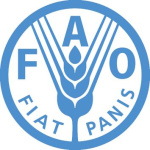- Industry: Agriculture
- Number of terms: 87409
- Number of blossaries: 0
- Company Profile:
Established in October 1945 with the objective of eliminating hunger and improving nutrition and standards of living by increasing agricultural productivity, FAO coordinates the efforts of governments and technical agencies in programs for developing agriculture, forestry, fisheries, and land and ...
A term applied to any biological unit that can function on its own, i.e., without the help of another unit, such as a transposable element that encodes an enzyme for its own transposition.
Industry:Biotechnology
A term commonly used to describe a crumbling or fragmenting callus. A friable callus is easily dissected and readily dispersed into single cells or clumps of cells in solution.
Industry:Biotechnology
A term describing a micro-organism that is capable of assimilating (or taking up) hydrogen gas.
Industry:Biotechnology
A term describing substances that are diffusable and that can affect spatially separated entities within cells.
Industry:Biotechnology
A term referring to biological units that cannot function by themselves; such units require the assistance of another unit, or "helper".
Industry:Biotechnology
A term used in both classical and molecular genetics.
1. In classical genetics: An organism or cell that is the result of recombination (crossing-over), e.g., Parents: <i>AB</i>/<i>ab</i> and <i>ab</i>/<i>ab</i>; recombinant offspring: <i>Ab</i>/<i>ab</i>.
2. In molecular genetics: A molecule containing DNA from different sources. The word is typically used as an adjective, e.g., recombinant DNA.
Industry:Biotechnology
A term used to describe any process or enzyme which acts at a defined sequence within a DNA or RNA molecule. Type II restriction enzymes are site-specific endonucleases and the recombination systems encoded by some transposons are site-specific, such as is the integration of phage into the <i>E. coli</i> chromosome.
Industry:Biotechnology
A term used to describe nucleic acid molecules consisting of only one polynucleotide chain. The genomes of certain phages, e.g., MI3, are single-stranded DNA molecules; rRNA, mRNA and tRNA are all single-stranded nucleic acids, but they all contain double-stranded regions formed by the intra-strand base-pairing of self-complementary sequences.
Industry:Biotechnology
A term used to describe RNA molecules joined <i>in vitro</i> by T4 RNA ligase.
Industry:Biotechnology
